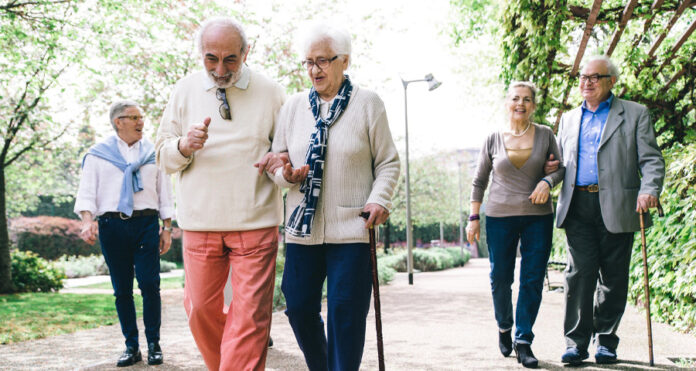Highlights
There is remarkable growth of elderly population in India due to higher life expectancy and lower mortality. The current population of Indian senior citizens is 138 million. Healthcare accessibility is a concern for the geriatric population in India amidst increasing rates of chronic diseases and the coronavirus pandemic. The severe dearth of healthcare infrastructure and manpower also poses serious problems. So, there is compelling need for homecare providers who can offer reliable and integrated geriatric care services under a single roof.
‘The Global COVID-19 Pandemic and its aftermath’-Don’t these words sound familiar to you? Yes, for it has become a predominant topic of discussion these days with its catastrophes and devastating after effects! Somewhere alongside, this tragedy has also unveiled the vulnerabilities of the most precious segment of society–the senior citizens! And certainly, this exploration has a widespread impact on India as the second most populated country. Interestingly, the problem is further compounded with the progressive growth of the elderly population due to increased life expectancy and decreasing mortality rates.
So, both the government and healthcare systems have to face the enormous challenge of meeting the demanding healthcare needs of the geriatric population in India. Considering the fragile health of the seniors with their compromised immune systems, this task is by no means a cakewalk. There is a surge of non-communicable diseases coupled with the threat of dangerous infections like the coronavirus and black fungus. Thus, senior care assumes a new dimension in this era wherein healthcare facilities are not easily accessible. Fortunately, some exclusive geriatric homecare providers like Athulya Home Healthcare overcome this hassle scruplously to offer quality care services at the doorsteps.
Sadly, elders are largely confined to their homes in the prevailing pandemic. Besides, there is a severe dearth of medical infrastructure and manpower. In these testing times, the senior-centric and integrated service portfolio of Athulya Home Healthcare is a boon in disguise that facilitates proper care of elders at home at affordable rates. The multitude of success stories and happy clientele clearly illustrate its genuine endeavours.
Without further ado, let us now investigate the demographics of Indian seniors and the healthcare implications due to the significant growth of the elderly population in India.
Demographics of Population Ageing in India
- Elderly population of India is increasing since 1961.
- Currently, there are nearly 138 million senior citizens in India including 67 million males and 71 million females.
- Percentage of the elderly population in India (in comparison to the total population) is 10.1% in 2021.
- Growth of the senior population is expected to rise to 13.1% in 2031.
- State-wise data reveals that Kerala has the maximum proportion of elders (16.5%) followed by Tamil Nadu (13.6%) and Himachal Pradesh (13.1%).
- In the context of life expectancy, Punjab has the highest numbers (20.2 years) for males and Himachal Pradesh (22.7 years) for females.
- Age-Specific Death Rate of elderly people for the age group 60-64 years has decreased from 22.5 in 2008 to 19.5 in 2018. For the age group 65-69 years, Age-Specific Death Rate has also decreased from 33.5 in 2008 to 31.3 in 2018.
- Nearly 60% of the senior population will be suffering from more than one chronic health problem by the year 2030.
- Number of elderly patients with cancer is likely to increase to 27 million by the year 2030.
- Research predicts that nearly 115 million individuals will be having Alzheimer’s disease and dementia by the year 2050.
Impact of healthcare needs for the elderly
- Aging adults induce growing costs on healthcare systems as there is greater utilization of age-related procedures and treatments thereby increasing costs of long-term care.
- The financial demands of the healthcare system will grow remarkably due to chronic ailments.
- As life expectancy increases, it is also likely that the prevalence of disability will also increase.
- The probability of non-communicable diseases like cardiovascular diseases, cancer and diabetes will increase with age.
- Mental ailments are likely to rise in the aging population as well.
- Immunizing older adults and creating awareness on preventive care needs urgent prioritization.
- There is also a greater chance of rises in rates of smoking, substance abuse and obesity among older adults leading to more health concerns.
- A severe dearth of healthcare professionals can be expected. As it is, there is a severe paucity of staff – for example, statistical studies reveal that there are 1.7 nurses per 1000 people as against the standard WHO recommendation of 2.5 -that’s appalling, right?
- Changes in family structure may lead to fewer family caretakers leading to a shortage of geriatric caregivers.
- There will be a huge gap in effectively addressing the rising comorbidities of the senior community.
The Road Ahead
To address the increasing aging population, the health care system must:
- Ramp up healthcare finances and infrastructure drastically to improve public health
- Make policies to reach the masses and encourage health providers to refurbish care access at home especially for seniors
- Recruit and train new staff to overcome acute manpower shortage
- Prepare for emerging technologies and innovations by increasing training
- Focus on providing preventive care rather than reactive care
To conclude, the elderly population growth and exponential rise of diseases call for more homecare providers like Athulya Home Healthcare who can seamlessly revolutionize the concept of senior care with promising outcomes and dedicated holistic approaches.













